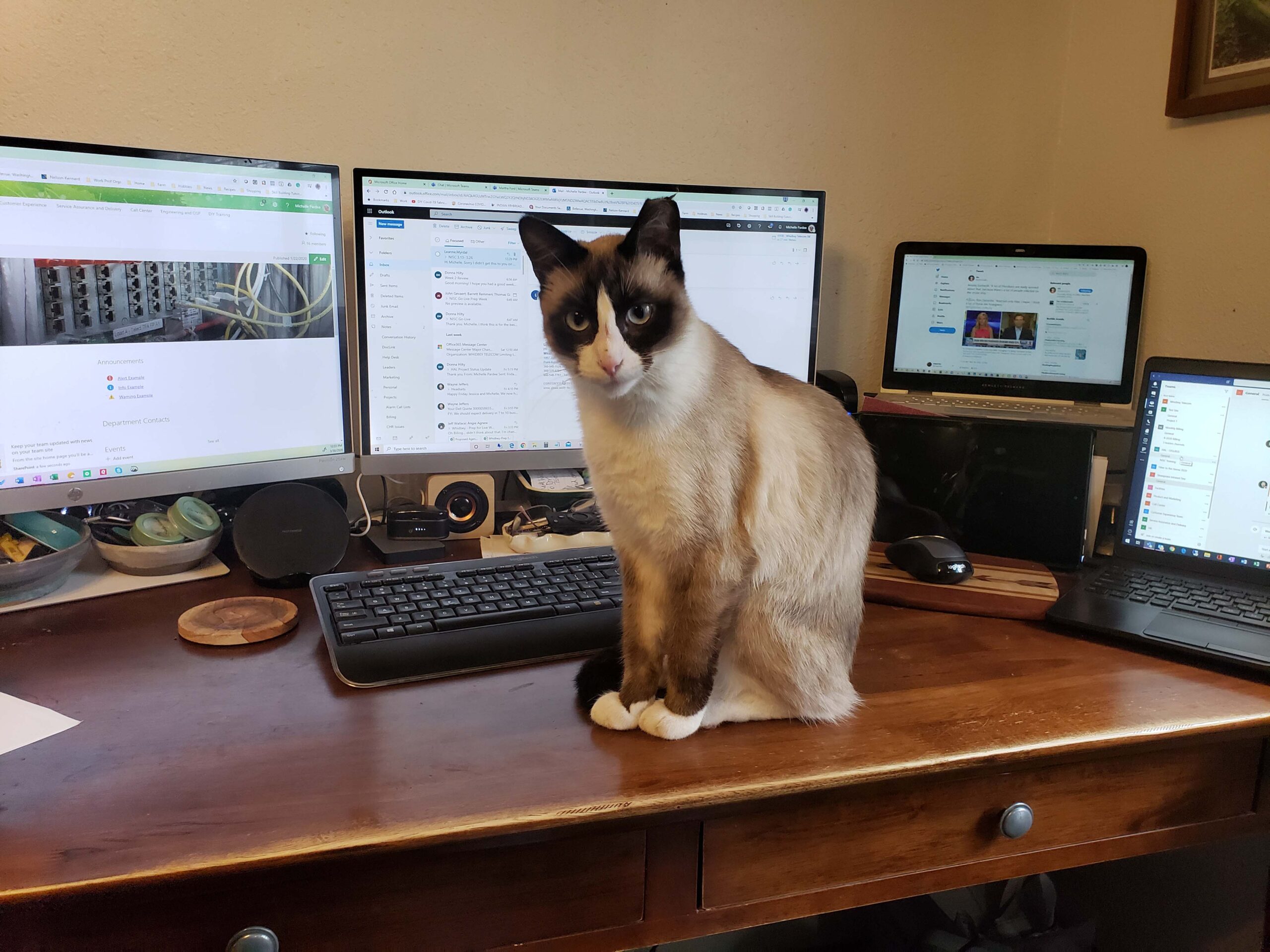The trend of working from home began as a necessary safety precaution for many. Now it’s become the new norm. According to a report by the Wall Street Journal, office occupancy in the U.S. stands at 40-60% of pre-Covid levels. That means many office workers are still working remotely in some capacity, whether hybrid or full-time.
So how can you work from home effectively? The keys to successful remote working are a good Internet connection, the right combination of tools and technology, and a healthy work-life balance. Pants are optional.
Make sure your internet is working as hard as you are.
Upgrade to the best Internet plan you can afford for your home office. I don’t just say this because I work for Whidbey Telecom. You need more bandwidth coming into the house if there is more and more going on, online. If you’re working and your partner or kiddo is also at home (streaming Netflix or doing their own work) you may start to experience buffering, lag or dropped sessions. Save yourself the frustration. Upgrade.
It’s not you, it’s your WiFi.
If you can’t remember the last time you upgraded your WiFi router, then it’s time. It doesn’t make a difference how much bandwidth you buy if your WiFi isn’t able to move it through your home to all of your wireless devices. Break up with your old router and treat yourself to newer tech.
Communicate with your coworkers. Pets count.
The key to any relationship is communication, and that holds true to your work relationships. Check out Zoom, GoToMeeting, WebEx, Microsoft Teams, or Google Hangouts. Each tool has its own quirks—use the free trials to figure out which works best for you. And be the cool person that turns on their camera first. We need to see reactions, body language and smiles.
Interacting with others outside of work is fine, too, and even encouraged. Take a break and walk your dog, chat with your neighbor, or play with your kiddo. It may not be the water cooler in the break room, but frequent communication with others will keep you engaged and happy.
Share the load.
File sharing is critical for exchanging proposals with clients or documents with colleagues. Email attachments are fine for small files and simple items. Don’t be that person that tries to send a huge file through email, only to find out your recipient’s email system can’t manage large files. Your file-sharing tool has to be able to handle large file sizes and has security built in. If you need to co-work on documents, check out the Microsoft Office suite of cloud-based apps, and check out Google Drive, DropBox, and OneDrive options.
Manage your work. And time.
Project management tools track progress, timelines, resource allocations, and budgets. They can be as simple as an Excel spreadsheet or as complex as a customized Smartsheet. Microsoft Planner, Airtable, Basecamp, Trello, Monday.com, and Jira are options to check out.
Let your friends and family know when you are available; more importantly, let them know when you are NOT available. You have to set firm boundaries. Block time out on your calendar. Make certain your family and friends know that just because you are home, it doesn’t mean you aren’t working. Don’t be that person on a conference call whose partner yells loudly that lunch is ready.
If you start missing the office and that break room coffee, a hybrid arrangement can be a great option. Find the tips and tricks that work best for you.
This content is provided for information purposes only. All information included herein is subject to change without notice. Whidbey Telecom is not responsible for any direct or indirect damages, arising from or related to the use or reliance on the above content. Nor do we endorse any particular software or application.
